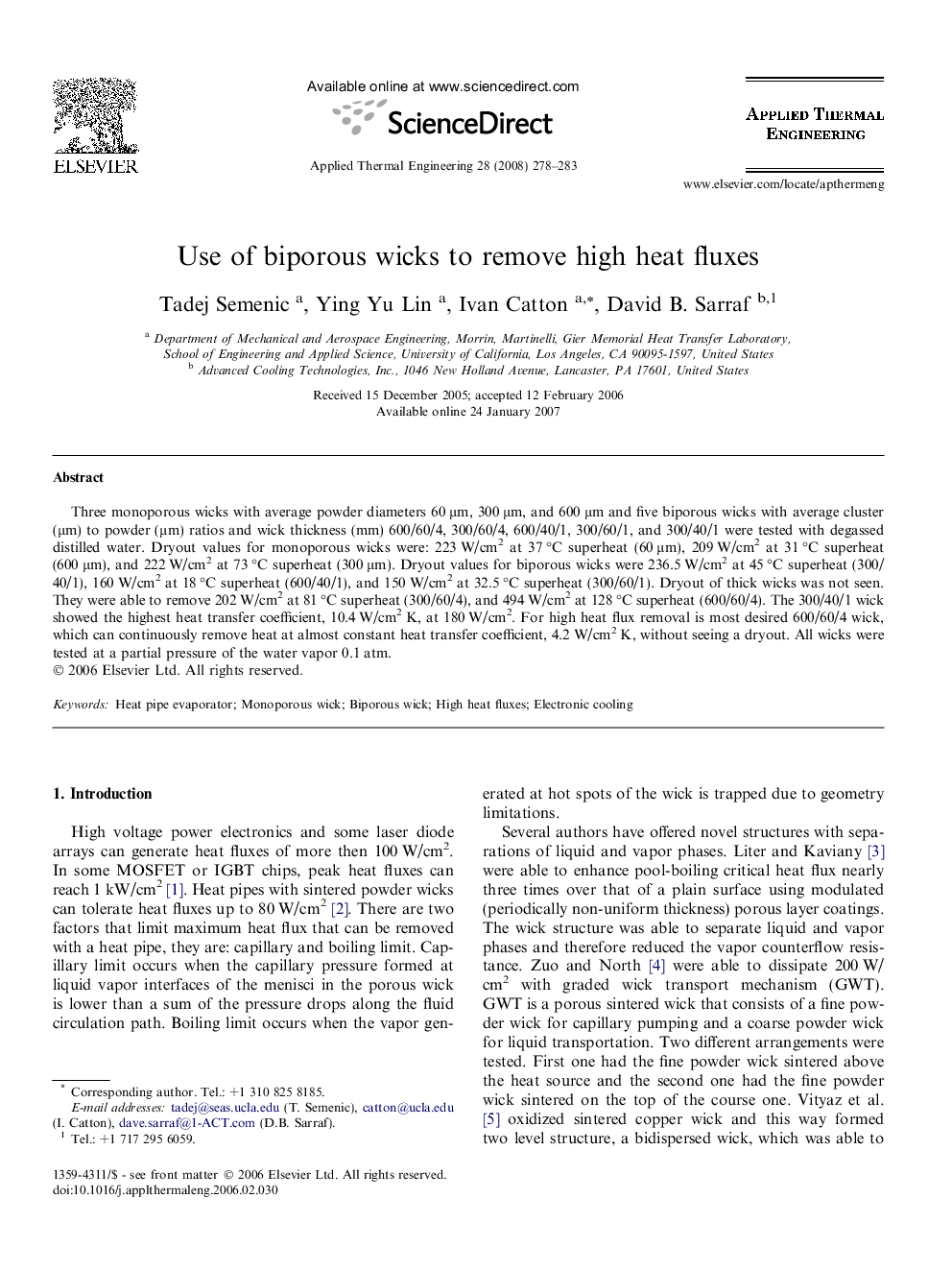| Article ID | Journal | Published Year | Pages | File Type |
|---|---|---|---|---|
| 648631 | Applied Thermal Engineering | 2008 | 6 Pages |
Three monoporous wicks with average powder diameters 60 μm, 300 μm, and 600 μm and five biporous wicks with average cluster (μm) to powder (μm) ratios and wick thickness (mm) 600/60/4, 300/60/4, 600/40/1, 300/60/1, and 300/40/1 were tested with degassed distilled water. Dryout values for monoporous wicks were: 223 W/cm2 at 37 °C superheat (60 μm), 209 W/cm2 at 31 °C superheat (600 μm), and 222 W/cm2 at 73 °C superheat (300 μm). Dryout values for biporous wicks were 236.5 W/cm2 at 45 °C superheat (300/40/1), 160 W/cm2 at 18 °C superheat (600/40/1), and 150 W/cm2 at 32.5 °C superheat (300/60/1). Dryout of thick wicks was not seen. They were able to remove 202 W/cm2 at 81 °C superheat (300/60/4), and 494 W/cm2 at 128 °C superheat (600/60/4). The 300/40/1 wick showed the highest heat transfer coefficient, 10.4 W/cm2 K, at 180 W/cm2. For high heat flux removal is most desired 600/60/4 wick, which can continuously remove heat at almost constant heat transfer coefficient, 4.2 W/cm2 K, without seeing a dryout. All wicks were tested at a partial pressure of the water vapor 0.1 atm.
